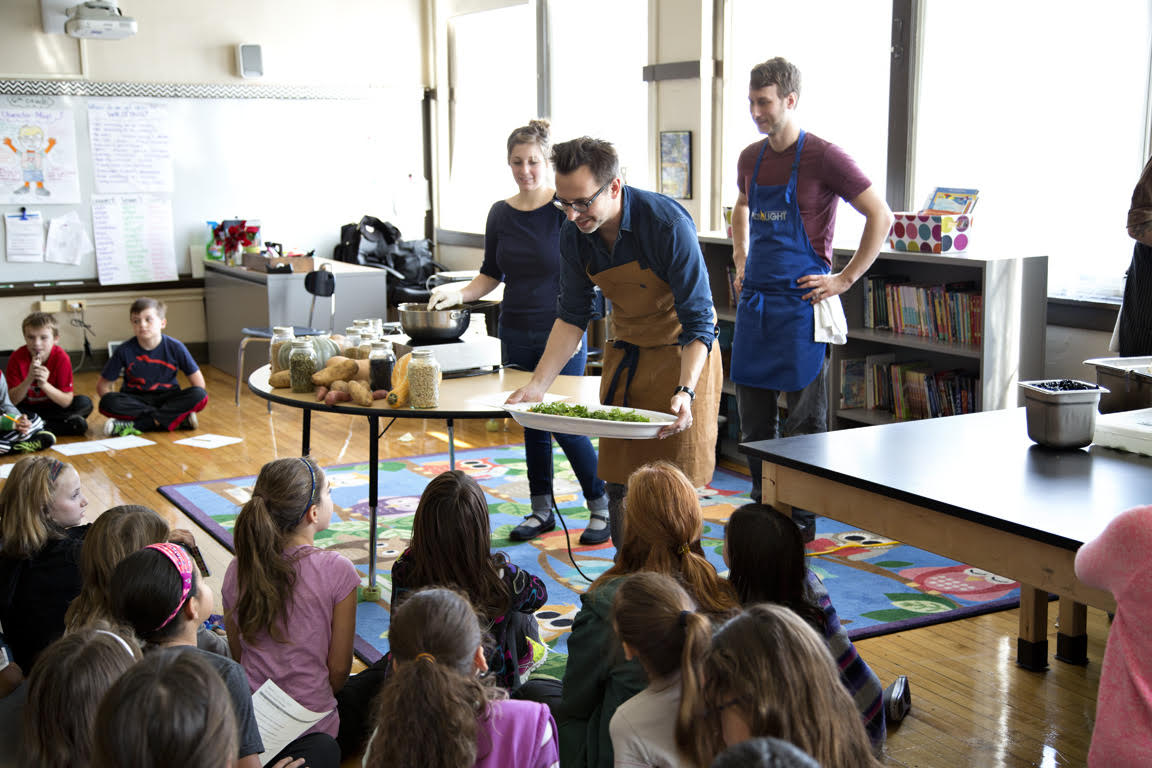“This standard is the story and relationship of food. It is both emotional and cognitive. It not only connects students to their food story, but introduces farming, the land, and the farmers who grow food through the lens’ of history, science, math, art, and consumer science. This standard takes students on a local to global journey of production, cultivation, and consumption. This Standard is important because it gives teachers the tools that will connect students to the environmental, social and economic issues from both a local and global level. More importantly, it gives teachers and students, through hands on immersion, the opportunity to impart why this knowledge is so important and empowers students to use their voice and actions to make changes to the food system around them.”
– Erin Meyer, Spence Farm Foundation
Expectations
Students who demonstrate understanding can: analyze the way food is grown, harvested, distributed, and used around the world.
Grade-Specific Competencies
- Identify where food is found, grown, and made.
- Describe how plants and animals are consumed
- Explain the origins of food using MyPlate.
- Define food systems.
Real World and Community Experiences
- Visit the school garden, planting seeds of quick-harvest vegetables
- Look at maps of food/ farm distribution in USA or world (USA example here: https://www.nass.usda.gov/Charts_and_Maps/)
- Farmer visit – check with Food services manager or Foodservice provider for contact
Grade-Specific Competencies
- Compare cultural dishes for ingredients and find the origins of the food in each recipe.
- Understand how cultivation, trade routes, and regions affect food supply.
- Describe agricultural history and its impact on food.
- Describe the evolution of types of food production.
- Describe ways to protect the food system.
Real World and Community Experiences
- Visit art museums and look for food in art from different regions
- Analyze menus from different restaurants that have specific regional/ cultural focus
- Visit a farm (physically or virtually) to see food production
- Have a farmer/grocery store manager/food distribution company representative visit for a Q and A
Grade-Specific Competencies
- Analyze food production and cultivation and their impact on today’s society.
- Promote ways to protect different food systems and the impact on society.
- Compare and contrast how the sources and origins of foods can be influenced by a historical time period.
Real World and Community Experiences
- Visit a farm or food distribution company
- Support a local community garden or work to create a local community garden, encouraging sustainability methods
Grade-Specific Competencies
- Reflect and act upon the costs and benefits of food choices in the realms of the environment, economics, health, and taste.
- Analyze how food reflects history.
- Articulate the food industry’s impact on food availability and access.
- Research resilient and productive food systems (e.g. sustainable food in a desert) and present findings.
Real World and Community Experiences
- Record an oral history of food culture within a local ethnic enclave
- Visit a farm and interview farmers on how food industry practices have shifted the agricultural landscape
- Visit a food processing plant and interview managers about process, supply, and target markets
- Engage in community asset mapping to determine how best to cultivate local food systems

